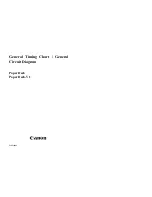
Preparing for Use
R&S
®
NRPxxTWG
12
User Manual 1178.8371.02 ─ 04
● Use a wrist strap and cord, and connect yourself to the ground.
● Use a conductive floor mat and heel strap combination.
EMI impact on measurement results
Electromagnetic interference (EMI) may affect the measurement results.
To suppress generated electromagnetic interference (EMI):
●
Use suitable shielded cables of high quality. For example, use double-shielded RF
and LAN cables.
●
Always terminate open cable ends.
●
Note the EMC classification in the data sheet.
3.4
Connecting to a DUT
For connecting the power sensor to a DUT, use the RF connector of the power sensor.
For details, see
Risk of overloading the sensor
Using a power sensor at a level above its upper measuring limit can damage the sen-
sor head. To avoid this risk, make sure not to exceed the test limit.
The test limits specified on the type label are valid only for the supplied attenuator. For
operation without attenuator, lower test limits apply, as specified in the data sheet.
To connect to the DUT
1. Ensure that the RF connector of your DUT is compatible with the RF connector of
the power sensor.
2. Insert the RF connector straight into the RF output of your DUT. Take care not to tilt
it.
180
3.
NOTICE!
Risk of damaging the center pin of the RF connector. Always rotate only
the hex nut of the RF connector. Never rotate the power sensor itself.
Tighten the RF connector manually.
4. To ensure maximum measurement accuracy, tighten the RF connector using a tor-
que wrench with the nominal torque recommended in
Connecting to a DUT













































